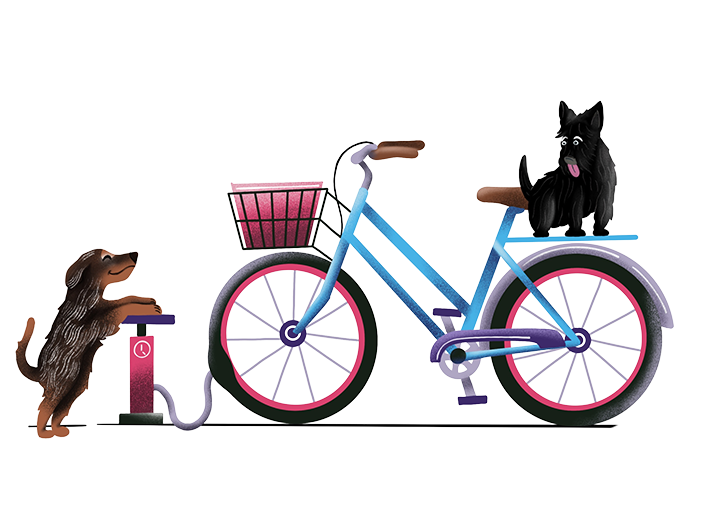Menu

Established businesses have it easy with marketing: print advertisements, radio jingles, TV ads, and social media pop-ups paid by their large budgets generate a huge amount of leads. But what if you’re a small startup with not a lot of money? What can you do with your time, hard work, and big dreams of getting your business off the ground? The answer lies in content marketing.
In our modern digital era, intrusive ads aren’t effective anymore. In fact, consumers hate ads so much they install ad-blockers or scroll past pop-ups - a huge blow on the resources of big brands. On the other hand, content marketing is a cheap and fresh way to generate more leads because consumers are the ones approaching you. It’s a feasible and cost-effective way for startups to make their way into the spotlight, as these seven brands proved:
In 2012, Canva began as a unicorn startup that allowed anyone to create appealing, professional-looking designs such as charts, infographics, and social images for free. As of 2020, it has a valuation of $6 billion and over 30 million monthly users. Canva has achieved this much through user-generated content and product-led growth.
By offering both free and premium options for all icons and design choices, more people and businesses turn to Canva as an alternative to hiring professional graphic designers. They further leveraged their product by bringing on influencers to help spread the word. In short, their product was helpful, valuable, and relevant that their audience naturally talked about it.
Oh Joy! is the story of a blogger turned lifestyle brand. Joy Cho was a graphic designer who shared her blogging about her inspirations when she moved to New York to look for a job in 2005. As she grew her social following and substantial blog traffic, she was approached by various clients - whose projects helped her move from freelancing to establishing a full-time business. Since then, she released various products including stationery lines, wallpapers, bedding, and accessories.
Joy’s domination over visual content revolves around her blog, her Pinterest, and how-to lifestyle videos. Her Pinterest is especially influential with over hundreds of boards that Pinterest users can freely take inspiration from. Without actively trying to sell anything, her beautifully curated boards are supported by over 13 million followers who simply enjoy her visual style.
Another successful blogger turned startup entrepreneur is Emily Weiss, who started a beauty blog called ‘Into The Gloss’ in 2010. From a successful blog followed her own line of beauty products called Glossier in 2014. A few years after the launch, Emily acquired venture funding worth $10.4M for both brands and has over 800k followers on Instagram.
The secret to Emily’s success was tapping into the blog’s audience and social media channels to ask customers what they want next. Glossier relies on audience interactions such as emails, surveys, social media comments, and the like to create moisturizers and cosmetics that her audience genuinely wants to buy. It’s also notable that the Into The Gloss community remains strong as the brand itself interacts with them in a genuine way, using an authentic voice and re-sharing fans’ tweets to build relationships with customers.
No startup business has the luxury of having an established audience. Creating relevant content and building a following on your own blog will take years - but the creators of social media automation tool Buffer found a way around that. They wrote nearly 150 guest posts across relevant blogs and websites. This tactic skyrocketed their traffic from 0 to 100k visitors in 9 months and their first 100,000 customers to boot.
From that point, Buffer launched more content and resources on their own blog. In fact, they have sub-blogs for marketing, workplace culture, and engineering as well as two podcasts on brands and social media. Buffer continues to enjoy over 1.5 million blog visits from an audience that appreciates their honest and genuine thought leadership.
In 2007, the personal finance product Mint won the TechCrunch40 competition. Even though they established some credibility, they didn’t have a lot of opportunities to grow until they figured out an intelligent marketing strategy. At the time, blogging wasn’t a big deal for businesses yet and their competitors were only blogging monthly (if at all). Mint created their MintLife blog and filled it with high quality content such as personal finance tips, videos, link compilations, and infographics.
Their articles went viral on sites like Reddit, they had more search engine hits, and they continued to attract potential customers and brand advocates. And with their tight budget, they invited other finance bloggers to write guest content and do Q&As for their blog. Mint’s strategy helped them scale to over a million users within a couple of years.
A lot of people love delicious, fancy dishes but aren’t equipped with the know-how to prepare them. Enter Blue Apron, with its weekly box of recipes curated by high-end chefs and pre-measured ingredients to cook them with. In its first year, Blue Apron’s subscription base exploded and by 2015, they have been delivering 5 million meals per month. However, Blue Apron didn’t limit themselves to their successful product-service.
What made Blue Apron click was that they recognized an educational void in their customer base, so they would release fun and educational articles onto their blog “Extra Helpings” about the dishes they offer. Printable recipe cards are also available even if you aren’t a subscriber, which made Blue Apron more attractive to potential customers. Lastly, Blue Apron also encouraged their community to share photos and comments about the food they prepared all over social media - cultivating almost 2.6 million enthusiastic Facebook followers.
When AirBedAndBreakfast.com began in 2008, its founders were renting out air mattresses in their San Francisco loft. Now, AirBnB offers over 7 million accommodations worldwide. What propelled them to the top was how they maintained their brand community through content.
They have a magazine that provides content for tourists when they visit certain locations. They upload stories about the experiences of hosts and guests alike. They have even published papers on the economic impact of AirBnB in specific locations. AirBnB also continues to publish maps, testimonials, and photographs from travelers and residents to enhance location guides. So even though AirBnB has achieved a lot (disrupting industries in the process), they never stopped creating content that promotes a sense of belonging.
As a startup, content management might be the last thing on your mind - and on your budget. Maybe you don’t have a lot of resources to hire influencers or do giveaways. So what content marketing tactics can you employ that won’t break the bank? Here are some of our top suggestions:
As a startup, you’re just beginning to find your footing within your industry. Content marketing is essential if you want to get your brand recognized. With creativity (and a lot of hard work), your content can help you tap into opportunities and resources -- without breaking the bank.
